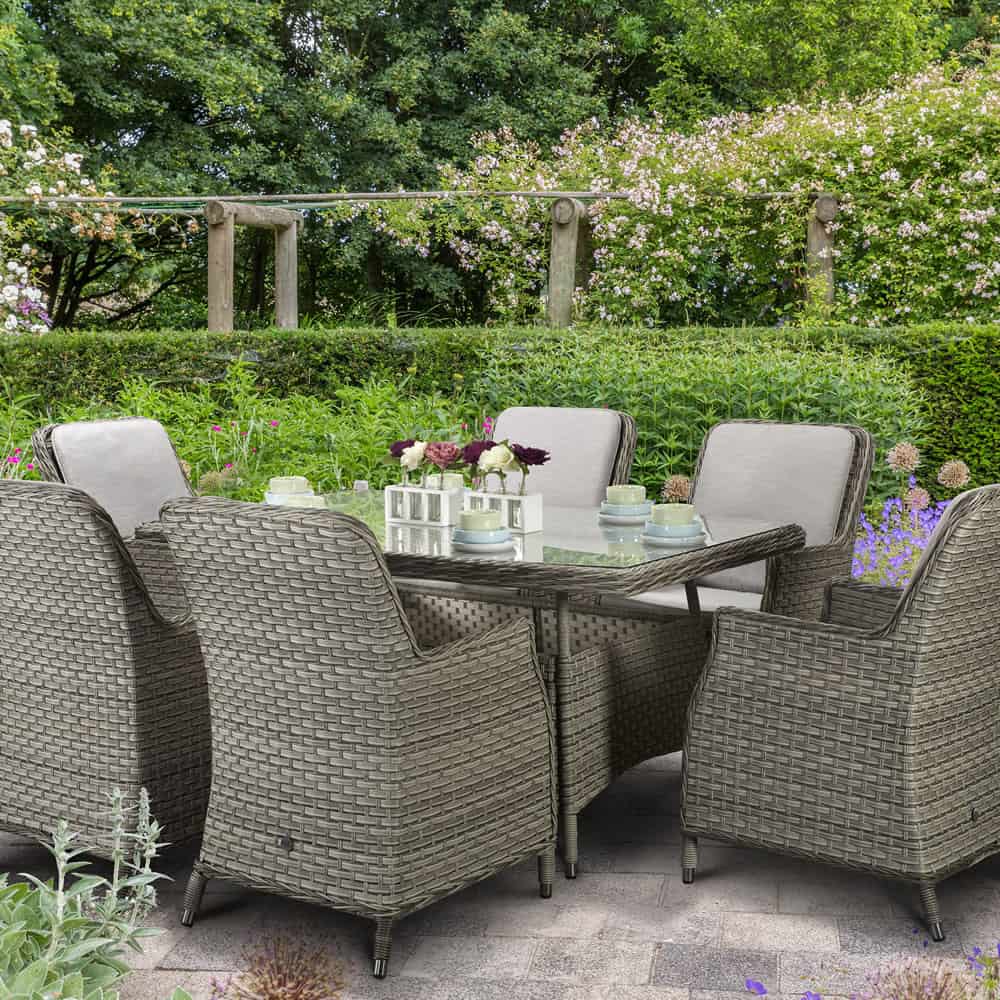When it comes to creating an inviting outdoor space, positioning your garden furniture plays a crucial role. The right placement not only enhances the functionality of your outdoor area but also elevates its aesthetic appeal. Whether you have a cozy backyard or a sprawling garden, this blog post will guide you through the art of positioning garden furniture for a picturesque and enjoyable outdoor retreat.
- Assess Your Garden’s Layout Before diving into furniture placement, take a closer look at your garden’s layout. Observe the available space, its dimensions, and any prominent features such as trees, flowerbeds, or water elements. Understanding the layout will help you determine the best areas to position your garden furniture for optimal usage and to highlight the natural beauty of your surroundings.
- Define Functional Areas Next, divide your outdoor space into functional areas. Consider the activities you enjoy in your garden, such as dining, lounging, or entertaining guests. Allocate specific areas for each purpose, ensuring there is ample room for movement and easy access to utilities like water and electricity if needed.
- Embrace the Natural Elements The UK is known for its lush green landscapes and beautiful flowers. When positioning your garden furniture, take advantage of these natural elements. Place seating arrangements near vibrant flower beds or along a path that leads to a stunning view. By blending your furniture with nature, you create a harmonious and visually appealing environment.
- Consider Sunlight and Shade In the UK, where weather can be unpredictable, finding the right balance between sunlight and shade is crucial. Observe the sun’s movement throughout the day to identify areas that receive ample sunlight and those that are shaded. Position seating areas strategically to offer a mix of sun and shade options, allowing you to enjoy your garden furniture comfortably regardless of the weather.
- Privacy and Seclusion Privacy is essential for creating a tranquil outdoor retreat. Place furniture in areas shielded from prying eyes, using natural elements like hedges, trellises, or strategically placed tall potted plants. Consider the sightlines from neighboring properties and position your furniture to maximize privacy while still enjoying the beauty of your garden.
- Focus on Views and Focal Points Every garden has its unique selling points, be it a blooming flower bed, a stunning water feature, or a picturesque landscape beyond your property. Position your furniture to showcase these focal points and create inviting vistas. Orient chairs and loungers to face the best views, allowing you to relax and soak in the beauty of your surroundings.
- Create Intimate Conversational Areas To encourage meaningful interactions, create cozy conversational areas within your garden. Arrange chairs and sofas in a way that facilitates conversation, such as facing each other or forming a circular arrangement. Incorporate a coffee table or side tables to provide a convenient surface for drinks, snacks, or books.
- Allow for Flexibility Gardens evolve with the seasons, so it’s essential to allow for flexibility in your furniture arrangement. Consider lightweight, movable furniture pieces that can be easily repositioned as needed. This flexibility allows you to adapt your outdoor space for different activities or to take advantage of changing weather conditions.
Conclusion
Positioning your garden furniture thoughtfully can transform your outdoor space into a haven of relaxation and enjoyment. By considering the garden’s layout, functionality, natural elements, sunlight, privacy, views, and conversational areas, you can create a harmonious and visually pleasing retreat right in your own backyard. So, go ahead, experiment, and create an outdoor oasis where you can unwind and embrace the beauty of nature in the UK.

